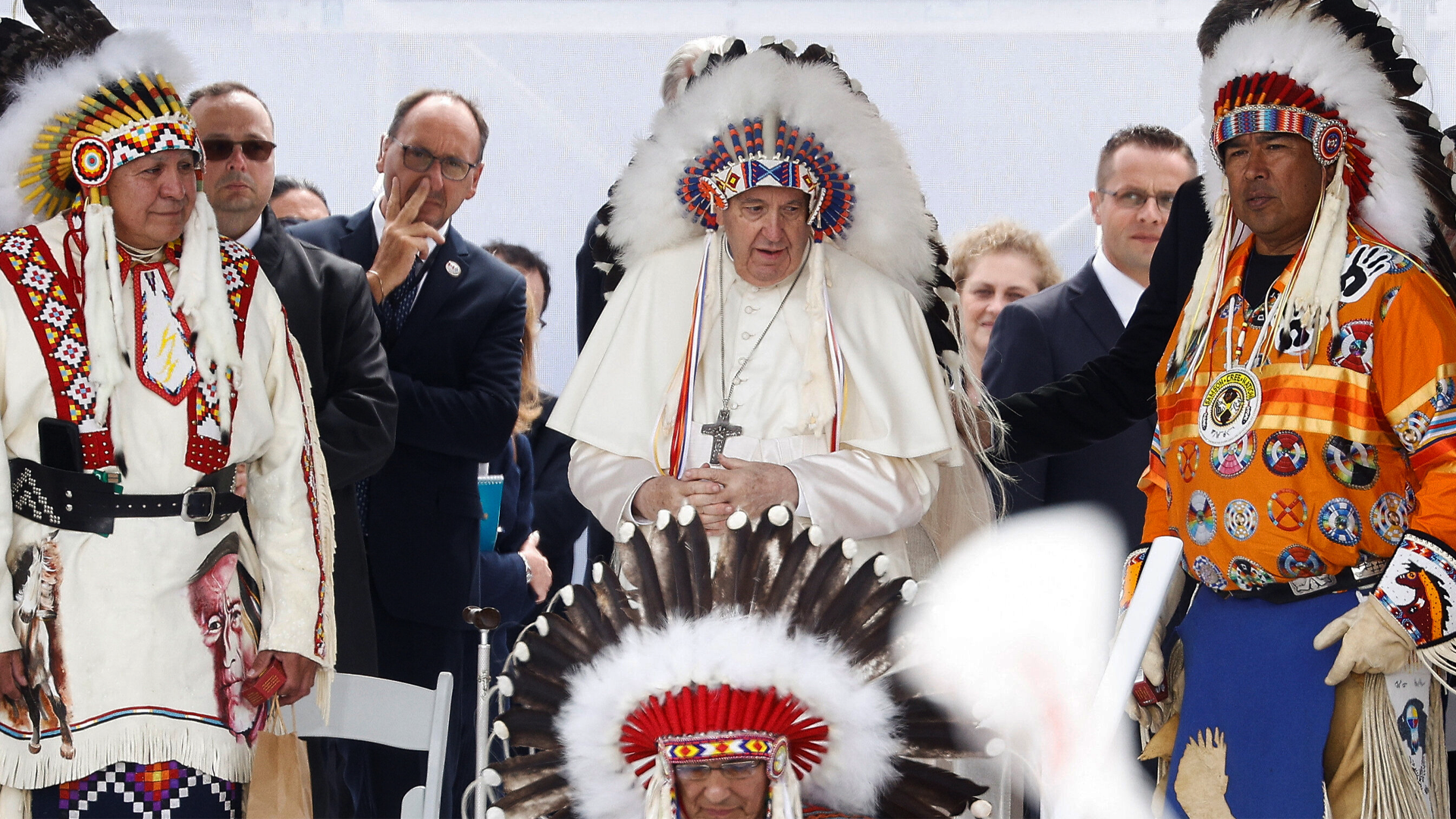This week, Pope Francis wore a traditional Indigenous headdress presented to him by Canadian residential school survivors. The statement marked an official apology by the Catholic Church for its involvement in the widespread abuse of Indigenous children.
When Chief Wilton Littlechild handed Pope Francis a traditional Indigenous headdress on Monday, years of suffering and institutional neglect were finally addressed.
Photographs of the Pope in Native garb have made the rounds on Twitter. It’s a remarkable, humorous image that has stood out amongst depressing political news and climate catastrophe.
But for all its levity, the Pope’s fashion statement held symbolic significance. Littlechild, a residential school survivor, had welcomed Pope Francis to Maskwacis, Alberta, along with an audience of others who have experienced similar trauma.
The visit was part of the Vatican’s apology for the Catholic Church’s role in Canada’s residential school system, which saw thousands of Indigenous children abused and murdered.
Although the last residential school was closed in 1998, its impact lives on. Under this system, Indigenous children were forcibly removed from their families in an effort to systematically wipe out Indigenous culture and language.
As a result, many survivors have had their cultural and ancestral roots ripped from beneath them.
Pope Francis’ visit to Alberta marks the Church’s first acknowledgement of the system as a form of ‘cultural genocide’. He was seen kissing Littlechild’s hands after receiving the headdress, a gesture of respect he has previously given to Holocaust survivors.
Following the apology, the Vatican newspaper released images of Pope Francis and Littlechild on the front page beneath the headline ‘I humbly beg forgiveness’. But the Indigenous American population have had a mixed response.
For many, the Church’s admission of guilt is an emotional turning point. It marks a powerful breakthrough for Indigenous visibility, a population who are grossly mistreated, marginalised, and ignored by both the American government and the international community.




















